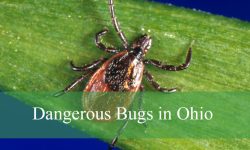California toads are a diverse group of amphibians that inhabit various ecosystems across the state, from coastal regions to arid deserts. These toads, including species like the California Toad (Anaxyrus boreas halophilus) and the Yosemite Toad (Anaxyrus canorus), exhibit remarkable adaptability to their environments.
Toads in California play a crucial role in the ecosystem, contributing to pest control by feeding on insects and serving as prey for larger animals.
With unique behaviors and habitat preferences, California’s toads are not only fascinating creatures to observe but also vital indicators of environmental health in the diverse landscapes they occupy.
Different Types of Toads in California
California toad
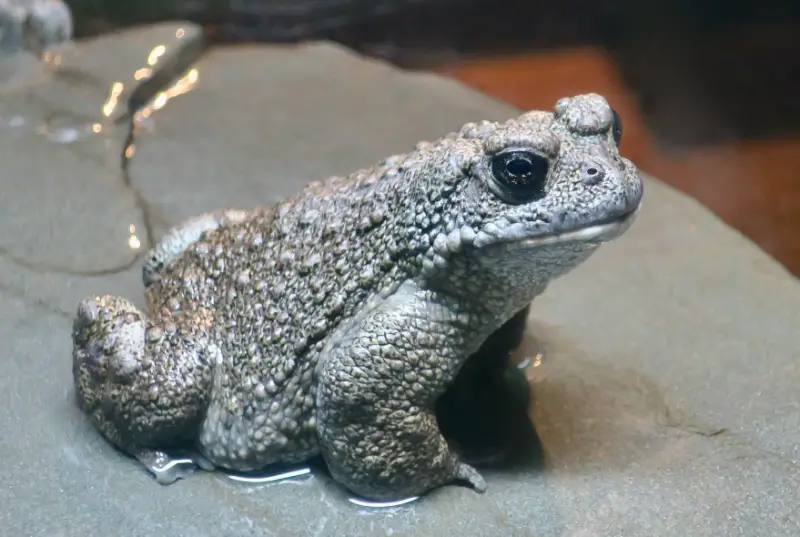
The California toad, scientifically known as Anaxyrus boreas halophilus, is a prevalent amphibian species found throughout much of California. These toads are notable for their large size and distinctive dry, warty skin, which is typically a greenish-brown or tan color. Their appearance provides excellent camouflage within their natural habitats, which range from coastal areas to mountainous regions.
One of the interesting aspects of the California toad is its adaptability to different environmental conditions. During the warmer summer months, these toads are primarily nocturnal, becoming active at night to avoid the heat. However, as temperatures drop in the cooler winter months, they switch to a diurnal lifestyle, being more active during the day.
In terms of diet, California toads are opportunistic feeders with a broad palate. They consume a wide variety of invertebrates, including insects, spiders, and worms, without showing a strong preference for any specific type of prey. Their feeding habits contribute to controlling insect populations in their ecosystems.
If you encounter a toad while exploring the diverse landscapes of California, there’s a good chance it’s a California toad, given its widespread distribution and adaptability across the state.
Arroyo toad

The Arroyo toad, scientifically known as Anaxyrus californicus, is a small, endangered amphibian primarily found in the southern coastal mountain ranges of California. Typically greenish-gray in color, some individuals may also display a unique salmon hue. Due to their similar appearance, the Arroyo toad can be easily mistaken for the more common California toad. However, the Arroyo toad’s status as an endangered species makes it a rare sight in the wild.
This toad is almost entirely nocturnal, emerging at night to avoid the daytime heat and potential predators. The breeding season for the Arroyo toad spans from March to July, during which time they seek out shallow, slow-moving streams and pools to lay their eggs. The species’ reliance on specific breeding habitats makes it particularly vulnerable to environmental changes, contributing to its endangered status.
Efforts to protect and restore the Arroyo toad’s natural habitats are crucial for the survival of this unique species. Conservation initiatives focus on safeguarding the toad’s breeding grounds and reducing human impact on its environment, helping to ensure that the Arroyo toad continues to exist in its native range.
Black Toad

The Black Toad, scientifically known as Anaxyrus exsul, is a distinctive amphibian with striking black skin adorned with cream-colored speckles and a prominent white stripe running down its back. This toad is endemic to the Deep Springs Valley in California, thriving exclusively at elevations between 5,000 and 5,200 feet. Despite its limited range, the Black Toad is abundant within its habitat, and therefore, it is not classified as an endangered species.
One of the unique characteristics of the Black Toad is its vocalization. Unlike most toads, it lacks a vocal sac, making it incapable of producing the typical croaking sounds associated with other species. Instead, it emits a small chirping noise, which serves as its primary form of communication. This unusual trait, along with its distinctive appearance and restricted range, makes the Black Toad a fascinating subject for herpetologists and nature enthusiasts alike.
Couch’s spadefoot toad

Couch’s spadefoot toad, scientifically named Scaphiopus couchii, is a small, dull yellow amphibian typically growing to about three inches in length. This toad is well-adapted to arid environments and is primarily found in the southeastern regions of California, particularly near the border with Arizona. Preferring prairie grasslands, Couch’s spadefoot toad relies on temporary rainwater pools for breeding.
Unlike many other toad species, Couch’s spadefoot toads are opportunistic breeders, taking advantage of any available rainwater to create suitable habitats for their tadpoles. This means they can breed almost any time during the year when rain occurs, allowing them to maximize their chances of successful reproduction in their often-dry environments. Their ability to quickly respond to rain events is crucial for their survival, as their tadpoles must develop rapidly before the temporary pools dry up.
Conservation of Couch’s spadefoot toad involves protecting their natural grassland habitats and ensuring that their breeding sites remain undisturbed, particularly during the brief periods when rainwater is available for reproduction.
Sonoran Desert Toad
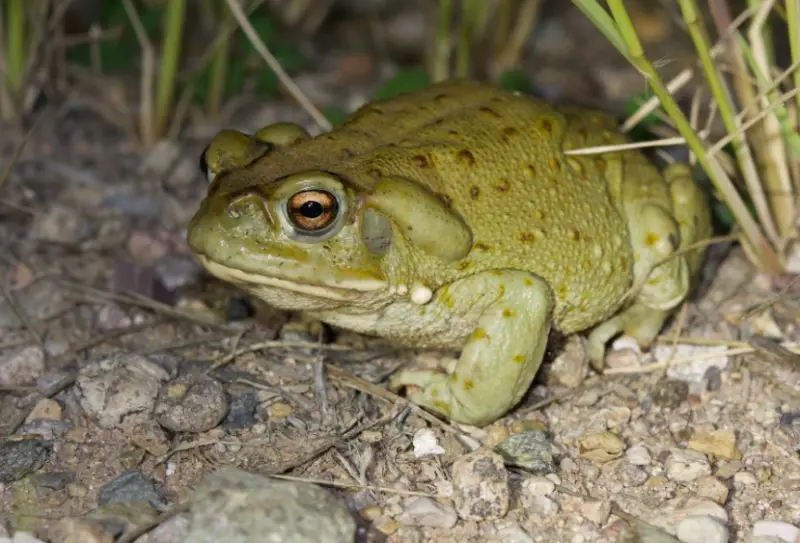
The Sonoran Desert Toad, scientifically known as Incilius alvarius, is an impressive amphibian that can grow over 7 inches in length. This large toad thrives in semi-desert habitats, which are prevalent in much of the southern half of California. Its smooth, olive green skin contributes to its striking appearance, making it somewhat similar to bullfrogs.
Unique among toads, the Sonoran Desert Toad typically breeds only once a year, and this event is highly dependent on heavy rainfall. This limited breeding season poses a vulnerability for the species, as they do not have the opportunity to reproduce as frequently as other toads. When conditions are right, males will gather to call and attract females, creating a brief but intense breeding spectacle.
Western Spadefoot Toad
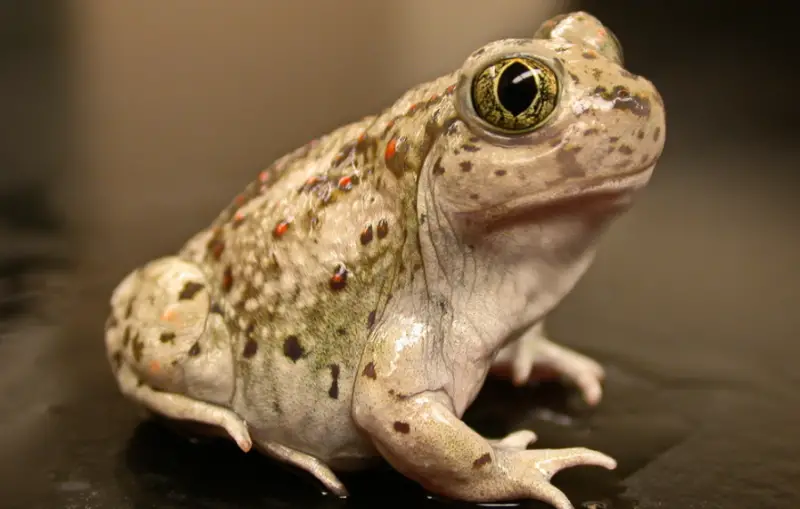
The Western Spadefoot Toad, scientifically known as Spea hammondii, is a smooth-skinned amphibian with a distinctive green coloration. This toad primarily inhabits the grasslands and oak woodlands of California’s Central Valley. Although it is quite common in these regions, its nocturnal nature makes it infrequently seen by people.
Like other spadefoot toads, the Western Spadefoot breeds in temporary pools that form after heavy rainfall. This unique reproductive strategy requires the toads to act quickly; they must not only find suitable breeding sites rapidly but also ensure that their eggs and tadpoles mature at an accelerated pace. This adaptation allows them to complete their life cycle before the ephemeral pools dry up.
Western Toad
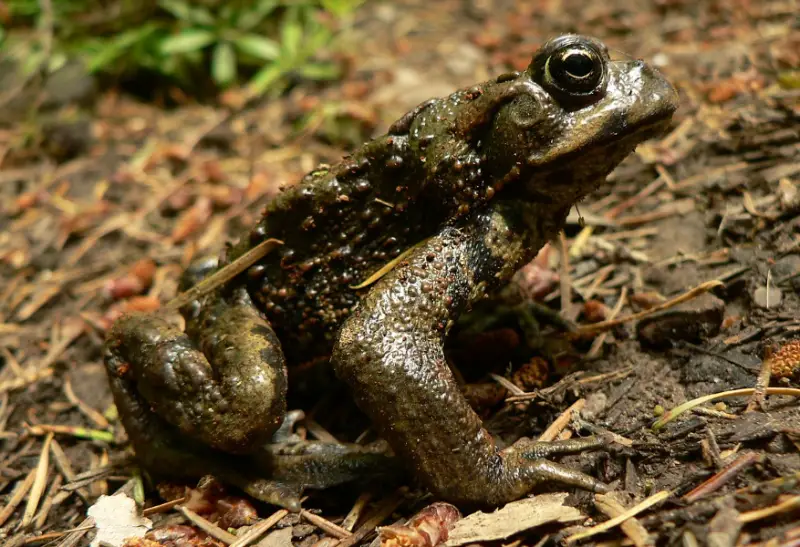
The Western Toad, scientifically known as Bufo boreas, is a chunky and stocky amphibian characterized by its short legs and warty skin. Its coloration varies from brown to gray, featuring a mottled underside and a pale stripe that runs down its back. Notably, it has two large knobs on the backs of its feet, which it uses for digging, similar to spadefoot toads.
As one of the most common toad species in California, the Western Toad is widely distributed throughout the state, thriving in a variety of habitats except for deserts and the highest mountain altitudes. This adaptability allows it to inhabit regions ranging from grasslands and forests to urban areas, making it a familiar sight for many residents.
The Western Toad typically breeds in still or slow-moving water, where females lay their eggs in long strings.
Woodhouse’s Toad
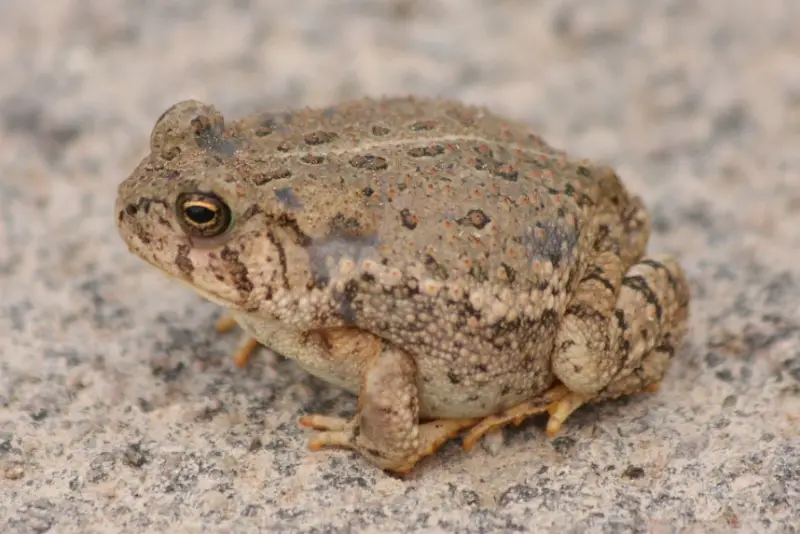
Woodhouse’s Toad, scientifically known as Bufo woodhousii, is a medium-sized amphibian that typically measures up to five inches in length. Its coloration ranges from yellowish brown to greenish gray, often featuring a light stripe running down its back. This toad prefers fertile river valleys and floodplains where the soil is deep and conducive for burrowing.
During the day, Woodhouse’s Toads seek refuge underground to escape the heat, emerging at night to hunt for insects and other invertebrates. Their nocturnal behavior allows them to take advantage of cooler temperatures while actively foraging for food.
In California, Woodhouse’s Toad is primarily found in the extreme southeastern part of the state, where it thrives in moist environments that support its lifestyle. Conservation efforts are essential to maintain the integrity of their habitats, as these areas face pressures from development and environmental changes.
Yosemite Toad

The Yosemite Toad, scientifically known as Anaxyrus canorus, is an amphibian that closely resembles the Western Toad but is adapted to much higher altitudes, typically ranging from 6,400 to 11,320 feet. This toad prefers wet meadows, where it can find the moisture necessary for its survival, but it also inhabits pine forests that contain seasonal ponds.
Native exclusively to the high Sierra Mountains in Central California, the Yosemite Toad has specialized habitat requirements that make it particularly vulnerable to environmental changes. These toads thrive in cool, moist conditions, which are essential for their breeding and for the development of their eggs and tadpoles.
Great Basin Spadefoot Toad

The Great Basin Spadefoot Toad, scientifically known as Spea intermontana, is named for the distinctive wedge-shaped digging claw on its foot, which it uses to burrow underground. Unlike many other toad species, spadefoot toads spend most of their lives buried beneath the soil, as they do not inhabit wet, humid environments. The Great Basin spadefoot is primarily found in the northeastern part of California, near the border with Oregon, where it thrives in arid and semi-arid regions.
Similar to other spadefoot toads, the Great Basin spadefoot emerges from its underground burrow during periods of heavy rain. These rain events create temporary pools of water, providing the necessary environment for the toad to breed. The toads take full advantage of these brief windows, quickly laying eggs in the gathered rainwater. The tadpoles must then develop rapidly before the pools dry up, making timing crucial for the survival of the species.
Great Plains Toad
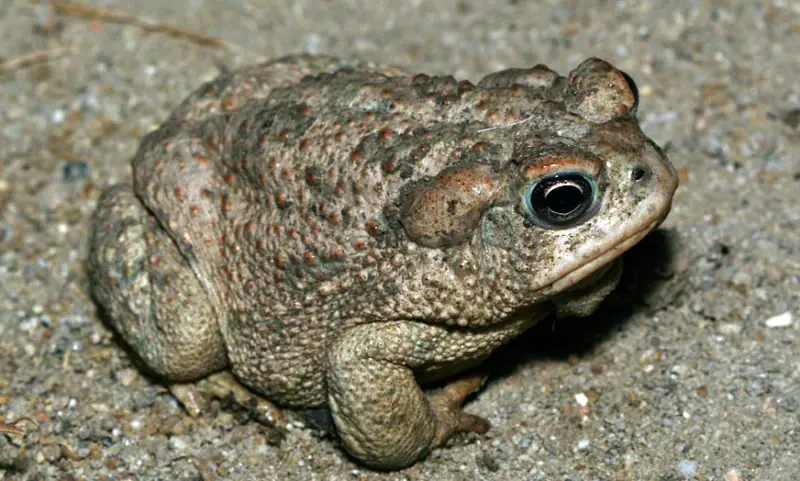
The Great Plains Toad, scientifically known as Anaxyrus cognatus, is a large and warty amphibian that is relatively uncommon in California. The few individuals that can be found in the state primarily inhabit the southeastern corner, where they seek out habitats with abundant insect populations. These toads are most active at night, often congregating near roadside ditches that serve as prime hunting grounds for their preferred prey.
One of the most distinctive features of the Great Plains Toad is its call, which has been likened to the sound of a jackhammer. During the breeding season, males produce this loud and prolonged call, which can last anywhere from 20 to 50 seconds, in an effort to attract females. This vocalization is a crucial part of their mating ritual, and it can be heard echoing through their habitat during the warmer months.
Although not commonly seen, the Great Plains Toad plays an important role in its ecosystem, contributing to insect control and serving as a food source for various predators. Conservation efforts aim to protect their limited habitats, ensuring that these unique toads can continue to thrive in their natural environment.
Red Spotted Toad
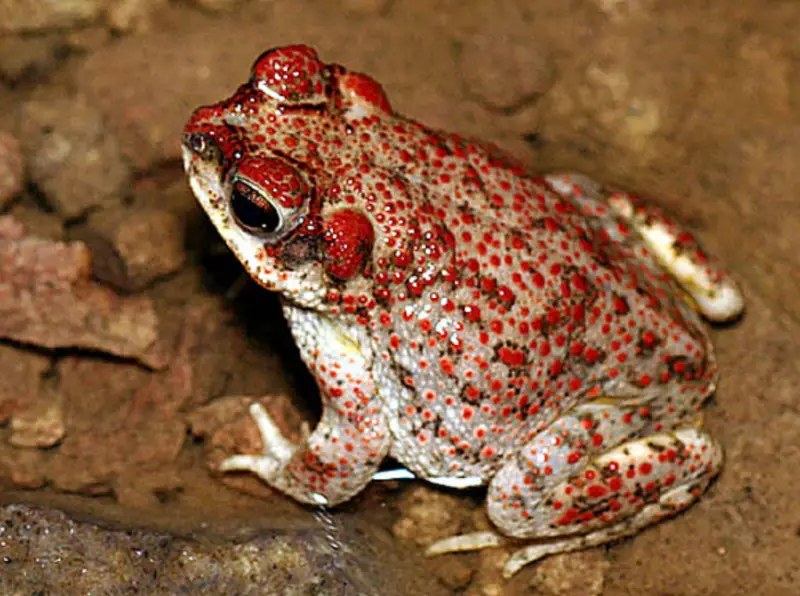
The Red Spotted Toad, scientifically known as Bufo punctatus, is an intriguing amphibian that may give the impression of having chickenpox due to the red spots that decorate each of its warts against a backdrop of gray skin. This distinctive appearance can make the toad seem somewhat sickly, yet it is well-adapted to its environment.
Commonly found throughout the southeastern corner of California, the Red Spotted Toad prefers to inhabit rocky canyons, where it seeks refuge in streams or under rocks. This habitat provides not only shelter but also access to moisture, which is essential for its survival in the often arid conditions of the region. The toad is primarily nocturnal, emerging at night to hunt for insects and other invertebrates.
Its range extends south into Mexico, where it continues to thrive in similar rocky terrains. Conservation efforts are important for the Red Spotted Toad, as habitat destruction and water availability can impact its populations.






